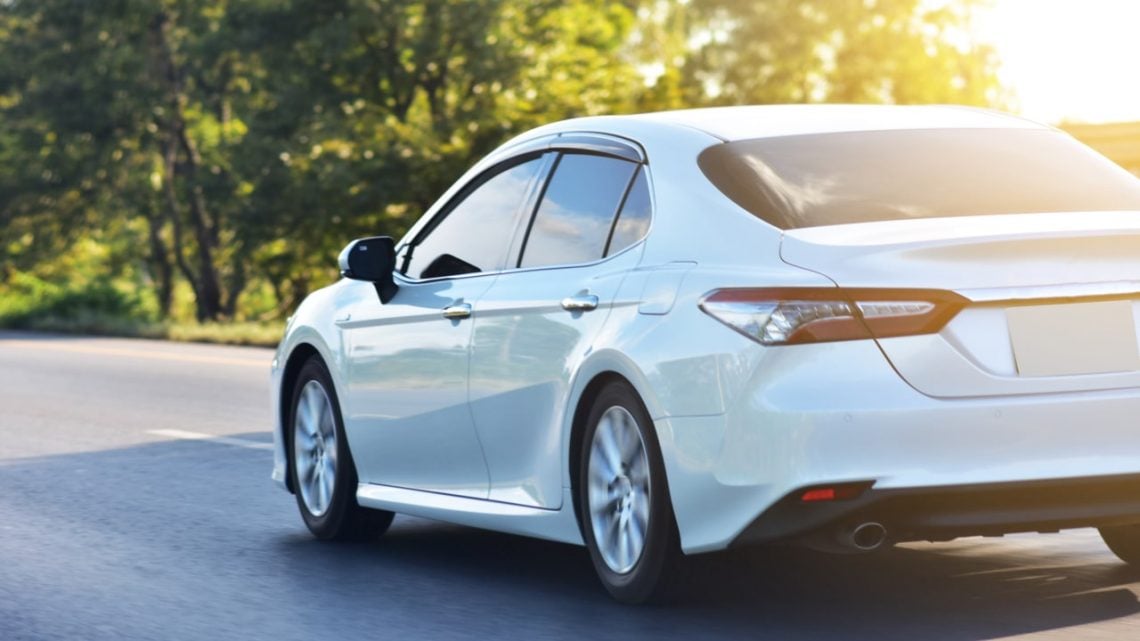For business owners and self-employed individuals who use their vehicles for work, understanding vehicle expense deductions is crucial for maximizing tax benefits. The IRS offers two primary methods for calculating these deductions: the Standard Mileage Deduction and the Actual Expenses Deduction.
Choosing the right method can significantly impact your tax savings. It’s important to understand both options to make the best decision for your specific situation.
Standard Mileage Deduction vs. Actual Expenses Deduction Overview
The Standard Mileage Deduction is a simplified method that uses a set rate per mile driven for business purposes. This standard mileage rate, updated annually by the IRS, is designed to cover all vehicle-related expenses.
Related: How Is The Standard IRS Mileage Rate Determined?
The Actual Expenses Deduction, on the other hand, involves tracking and deducting all eligible vehicle expenses individually. This method requires more detailed record-keeping but can potentially yield a larger deduction for some taxpayers.
Both methods have their advantages and drawbacks. The best choice depends on factors such as the type of vehicle you use, how much you drive for business, and your willingness to maintain detailed records.
It’s worth noting that while you can switch between methods in some cases, there are restrictions. Understanding these rules is essential for long-term tax planning.
Standard Mileage Deduction Explained
The Standard Mileage Deduction is straightforward: you multiply your business miles by the IRS-set rate. For 2025, the standard mileage rate is 70 cents per mile.
This method covers not just fuel, but also depreciation, insurance, repairs, and maintenance. It’s particularly beneficial for those who drive a lot for business or have lower actual vehicle expenses.
To use this method, you need to track your business mileage throughout the year. Many apps, such as TripLog, can help automate this process, making it easier to maintain accurate records.
One key advantage of the Standard Mileage method is its simplicity. However, it may not be the best option for those with high vehicle expenses or who use more expensive vehicles.
Related: How to Calculate Your Mileage for Taxes or Reimbursement
Actual Expenses Deduction Explained
The Actual Expenses method involves tracking and deducting all eligible vehicle-related costs. This includes gas, oil, repairs, tires, insurance, registration fees, licenses, and depreciation or lease payments.
To calculate your deduction, you’ll need to determine the percentage of your vehicle’s use that’s for business. This percentage is then applied to your total vehicle expenses.
This method can be more beneficial for those with higher vehicle costs, such as luxury car owners or those with high maintenance expenses. However, it requires diligent record-keeping throughout the year.
Keep in mind that if you use this method in the first year you use a car for business, you’re generally required to use it for as long as you use that car in your business. This makes the initial choice particularly important.

Standard Mileage Deduction vs. Actual Expenses Deduction Comparison
To determine which method is best, calculate your deduction using both methods and choose the one that yields the larger deduction. The Standard Mileage method often benefits high-mileage drivers with efficient vehicles.
The Actual Expenses method typically works better for those with lower mileage but higher vehicle costs. For example, if you drive an expensive vehicle with high maintenance costs, this method might result in a larger deduction.
Consider a scenario where you drove 15,000 business miles in a year. Using the Standard Mileage rate, your deduction would be $10,050 (15,000 x $0.70). If your actual expenses exceeded this amount, the Actual Expenses method would be more beneficial.
It’s important to note that your optimal method may change from year to year. That’s why it’s crucial to calculate both methods annually to ensure you’re maximizing your deduction.
Related: Car Allowance vs. Mileage Reimbursement Explained
Standard Mileage Deduction vs. Actual Expenses Deduction: Recordkeeping Requirements
Regardless of the method you choose, accurate recordkeeping is crucial for maximizing your deduction and ensuring compliance with IRS requirements. This is where TripLog can be an invaluable tool for both methods.
For the Standard Mileage method, TripLog automatically tracks your trips using GPS technology, recording business miles, dates, and locations. The app allows you to easily categorize trips as business or personal, ensuring accuracy in your mileage log.
If you’re using the Actual Expenses method, TripLog offers features to track and categorize all your vehicle-related expenses. You can easily snap photos of receipts and store them within the app, creating a comprehensive record of your vehicle costs.
TripLog’s reporting features make it simple to generate IRS-compliant logs for either deduction method. These detailed reports can be invaluable in case of an audit, providing clear documentation of your business vehicle use.
By using TripLog, you can streamline your recordkeeping process, reduce errors, and ensure you have all the necessary information to maximize your vehicle expense deduction. This can save you time and potentially increase your tax savings.
Switching Between the Standard Mileage Deduction vs. Actual Expenses Deduction Methods
The IRS has specific rules about switching between the Standard Mileage and Actual Expenses methods. If you use the Standard Mileage rate in the first year your vehicle is used for business, you can switch to the Actual Expenses method in a later year.
However, if you use the Actual Expenses method in the first year, you’re generally required to continue using this method for the life of the vehicle in your business. This makes your initial choice particularly important.
Consider your long-term plans when choosing a method in the first year. If you’re unsure, starting with the Standard Mileage method gives you more flexibility for future tax years.
Remember that even if you’ve used the Standard Mileage method in previous years, you should still calculate your deduction using both methods each year. This ensures you’re always using the most advantageous method for your current situation.
Related: Should You Use a Mileage Tracker App?
Tips for Maximizing Your Deduction
Consistency is key when it comes to tracking your vehicle expenses. Make it a habit to log your mileage and expenses regularly using TripLog, rather than trying to reconstruct records at tax time.
Don’t overlook any business-related driving. Short trips can add up over the year, potentially increasing your deduction significantly if you’re using the Standard Mileage method.
If you’re using the Actual Expenses method, keep track of all vehicle-related costs, no matter how small. Even minor expenses like car washes or parking fees can contribute to your overall deduction.
Consider the timing of major vehicle expenses if you’re using the Actual Expenses method. If possible, grouping larger expenses in a single tax year could potentially increase your deduction for that year.
Switching Between the Standard Mileage Deduction vs. Actual Expenses Deduction Methods: Conclusion
Choosing between the Standard Mileage Deduction and the Actual Expenses Deduction is a crucial decision for anyone using their vehicle for business purposes. Each method has its advantages, and the best choice depends on your specific circumstances.
The Standard Mileage method offers simplicity and is often beneficial for high-mileage drivers with efficient vehicles. On the other hand, the Actual Expenses method can provide larger deductions for those with higher vehicle costs or lower business mileage.
Remember, the key to maximizing your deduction is accurate and consistent recordkeeping. Utilizing a tool like TripLog can significantly simplify this process, ensuring you have all the necessary information at tax time.
Download TripLog on iOS or Android and get started for free today!









